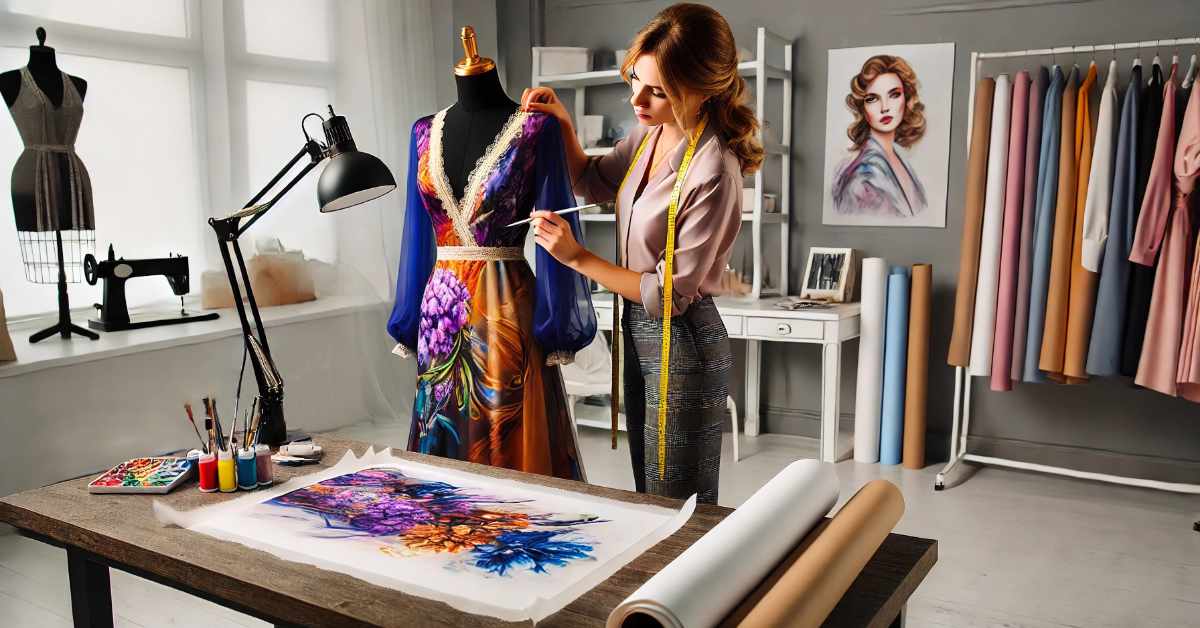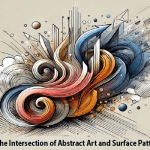The Intersection of Fashion and Art: Turning Canvases into Wearable Statements

Art has always been a powerful form of expression, often confined to the boundaries of a canvas or gallery wall. But what if we could break free from those constraints and allow art to flow into our everyday lives? That’s where fashion steps in, transforming wearable pieces into walking canvases, where art and creativity collide to make bold statements.
When Fashion Meets Art
At first glance, merging fashion and art might seem straightforward—simply transfer a design onto fabric, and voilà! But in reality, it’s a delicate dance that requires careful consideration. The canvas of fashion isn’t flat like a painting; it’s dynamic, moving with the body, and interacting with the world in three dimensions. Every piece of clothing is a living artwork, breathing life into designs in ways that a static frame never could.
As a designer who has explored this intersection, I’ve had the pleasure and challenge of placing my pattern designs on clothing through LeGaleriste, a print-on-demand service. While this method offers flexibility and accessibility, it also comes with unique challenges. One of the most significant is the realization that not every pattern or design works well on clothing. Even with the most visually striking patterns, poor placement or an incompatible design can result in a piece that feels off—leading to a less-than-satisfying final product.
Finding the Right Patterns for Wearable Art
Through trial and error, I’ve learned that choosing the right patterns and designs for wearable art is both an art and a science. Here are some tips to help guide the process:
Consider the Garment’s Shape and Movement: Unlike a painting that hangs still on a wall, clothing moves and changes shape with the body. When selecting a pattern, think about how it will interact with the garment’s silhouette. Will the pattern distort in unflattering ways when the fabric stretches or folds? Patterns that are too rigid or overly complex may lose their impact when placed on a moving body.
Mind the Placement: The placement of a pattern can make or break a design. Some areas of the body naturally draw attention, so placing a focal point of your design in these areas can enhance the overall look. Conversely, be cautious of where certain elements fall—no one wants an awkward placement that disrupts the harmony of the design.
Scale Matters: The scale of your pattern is crucial. Large, bold patterns can be striking but might overwhelm smaller garments or more petite frames. On the other hand, intricate, small-scale patterns can get lost on a large canvas or appear too busy. Experiment with different scales to see what feels balanced and visually appealing.
Colour Coordination: Colours can drastically change when translated from digital to fabric. It’s essential to consider how the colours in your design will work with the material and the overall palette of the garment. Sometimes, what looks vibrant on screen might appear dull or clash when printed. Testing colour swatches or using colour palettes known to translate well onto fabric can save you from disappointment.
Embrace Experimentation: Not every design will work the first time, and that’s okay. The process of creating wearable art is one of experimentation. Sometimes, the most unexpected patterns or color combinations can lead to the most stunning results. Don’t be afraid to step outside your comfort zone and try new things.
The Evolution of Wearable Art
Creating wearable art is a journey. Like any form of art, it’s about finding a balance between creativity and practicality, between the artist’s vision and the garment’s function. For me, this journey has been about discovering which patterns resonate most when worn—what flows naturally with the body, what enhances the wearer’s presence, and what turns heads for all the right reasons.
Art doesn’t have to be confined to a gallery. It can live and breathe with us, becoming part of our daily narrative through the clothes we wear. When fashion and art collide, they create something truly special—a statement that’s not just seen but experienced. As I continue to explore this creative intersection, I’m excited to see where it takes me and the pieces I’ll create along the way.
So, if you’re considering turning your art into wearable pieces, remember that the process is just as important as the final product. Take the time to find the right patterns, experiment with placement and scale, and above all, let your creativity flow. After all, fashion is just another canvas waiting to be filled with art.






0 Comments